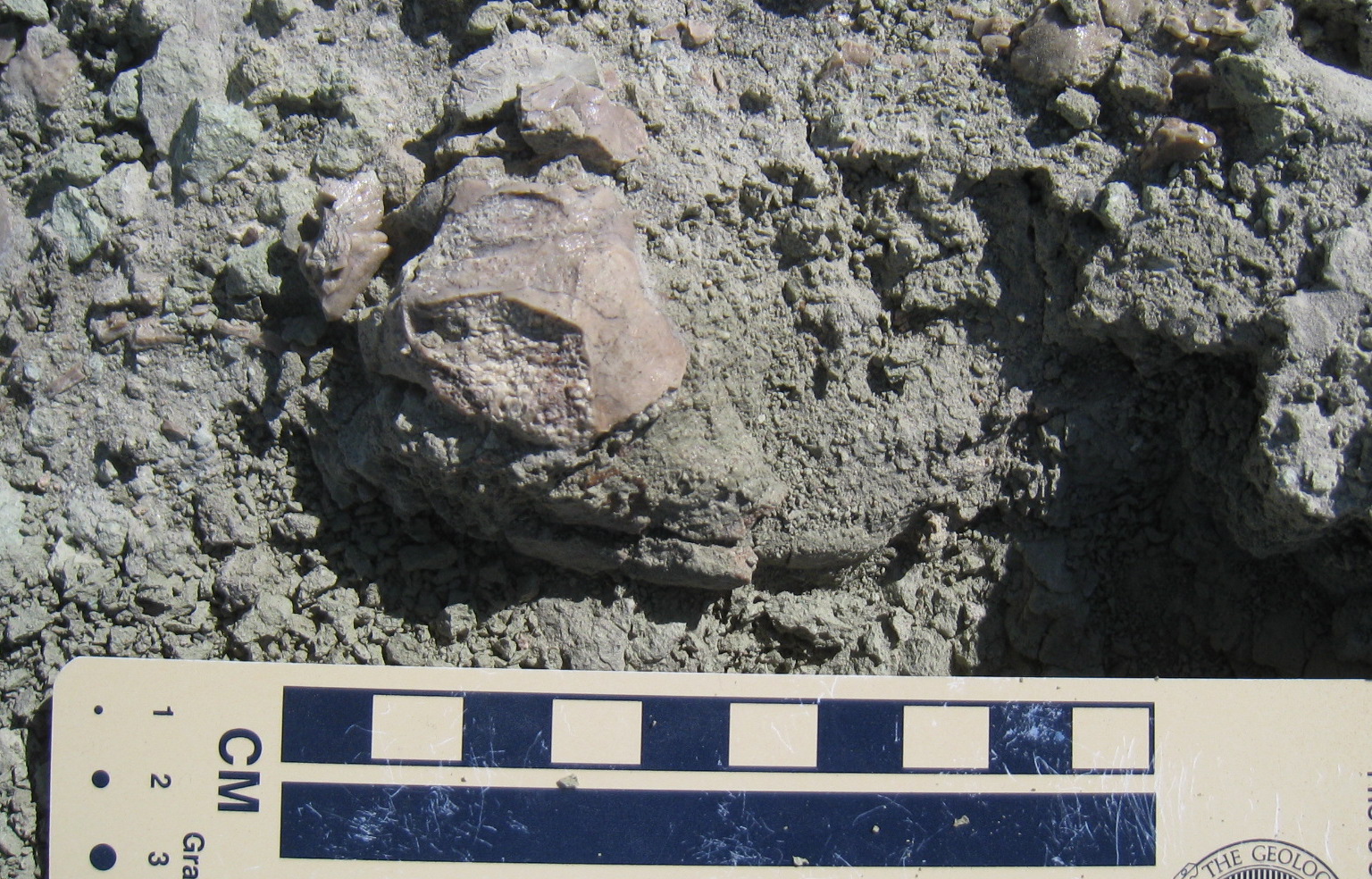My first attempt at paleontological work was twenty years ago, during the summer after my sophomore year in high school. A local archaeologist had received an ichthyosaur phalanx and, not knowing what to do with it, had me try cutting some thin sections for further study. Long story short: it did not end well for the fossil and I spent two decades wrestling with a not-insignificant amount of guilt.
This memory sprang immediately to mind as I failed in my first attempt to collect a sizable fossil. The specimen in question was an oreodont skull--or at least it very likely was, given the size and stratigraphic location--whose sagittal crest poked out of some fossilized soil. Given the importance of fossil skulls, my goal was to get it out in one piece. That meant jacketing.
Nice fossil you've got there. Be a shame if it had an accident.
A fossil jacket is a covering that overlays the surface of a fossil, holding it and the rock surrounding it together during removal. Museum displays often tout the use of plaster-soaked fabric, but any relatively sturdy covering will do--aluminum foil and duct tape do a great job in a pinch. Before applying the covering, however, one has to carve out a "mushroom," or a pedestal of rock that surrounds the fossil and tapers off below, where it can be broken off and flipped after the top layer of the jacket is applied.
Jacketing carries two clear risks. The first comes in carving out the mushroom: since most of the fossil is still buried, one has to make an educated guess as to how big the fossil is and so where to start chiseling. Chisel too close and you'll cut through the fossil; chisel too far away and you'll be stuck carrying a lot of extra rock weight back to camp. The second risk comes from disturbing the area around the fossil: if the rock matrix is brittle and starts to crack from, well, hitting it with a hammer and chisel, then you run the risk of creating a fracture plane that goes through the fossil.
And in extremely brittle rock--fossilized soil, for example--you can create dozens of fracture planes that go right through your fossil skull.
There are ways to guard against this, of course. Chemical consolidants can be useful in making the fossil more cohesive than the surrounding rock. But sometimes all the glue in the world can't stand up to the percussive force of a newbie paleontologist's rock hammer.
I am admittedly dejected. The instructors assure me that it was a difficult specimen to remove, and they've even given me a vote of confidence by asking me to try again on another skull tomorrow (have I mentioned that Logan Butte is fossiliferous?), but I can't ignore the fact that I've destroyed an irreplaceable part of natural history. Against all odds, this skull became a fossil and survived all disturbance for more than 20 million years; after all that, some idiot philosopher jostles it into oblivion within minutes.
Making mistakes is a necessary part of the learning process, but it's much easier to accept that when the mistake is an abstract failure of a thought experiment. There's no loss of data there. But we have little enough to work with in paleontology that the concrete destruction of fossil material honestly feels upsetting.
